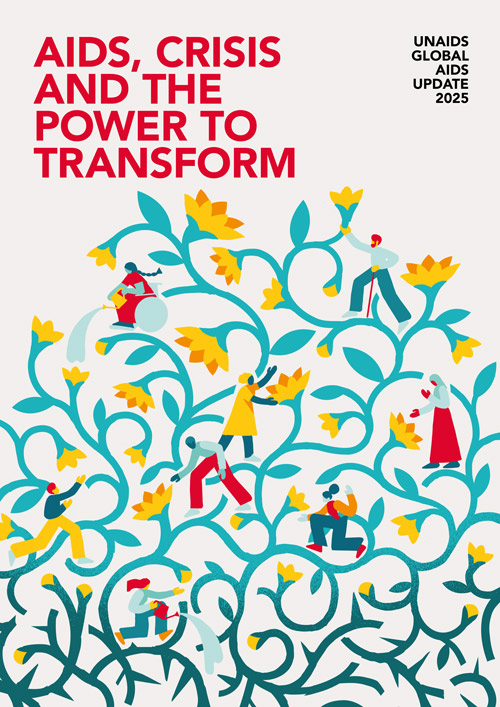Progress on HIV—Derailed
The latest UNAIDS report shows advances in the global HIV response but warns funding cuts are creating a crisis for millions of people impacted by HIV
Over two decades and counting, the global HIV response has saved 27 million lives, thanks in large part to its single biggest contributor: the United States. The sudden withdrawal of international assistance from the U.S. has had a catastrophic effect, particularly in low- and middle-income countries, as a new UNAIDS report titled AIDS, Crisis, and the Power to Transform details. Interrupted testing, treatment, and prevention services, as well as debilitated healthcare infrastructure, threaten to derail progress and alter the lives of millions.
In the report’s foreword, UNAIDS Executive Director Winnie Byanyima conveyed the potential devastation ahead: “UNAIDS modelling shows that if the funding permanently disappears, there could be an additional 6 million HIV infections and an additional 4 million AIDS-related deaths by 2029.”
Yet the report also highlights ways in which countries are striving to rebound from the cuts and salvage what momentum they can. States Byanyima: “Twenty-five of the 60 low- and middle-income countries included in this report have found ways to increase HIV spending from domestic resources into 2026. This is the future of the HIV response—nationally owned and led, sustainable, inclusive and multisectoral.”
Here’s a snapshot of the global state of HIV in 2024 (i.e., before the funding cuts).
What we have achieved
- An estimated 1.3 million people newly acquired HIV in 2024, only slightly down from 2023.
- Between 2000 and 2024, nearly 4.4 million mother-to-child transmissions were averted thanks to programs to prevent vertical transmission of the virus. Programs in eastern and southern Africa were integral to this success, the report noted.
- Approximately 31.6 million of the 40.8 million people living with HIV were receiving HIV treatment in 2024. Seventy-three percent of all people living with HIV achieved viral suppression.
- Spurred to a large extent by expanded access to antiretrovirals and suppressed viral loads in Asia and the Pacific, the Caribbean, and sub-Saharan Africa, the number of AIDS-related deaths in 2024 was an estimated 630,000, with annual decreases from 2010 to 2024 across all regions except eastern Europe and central Asia.
What we need to work on
- Disproportionately burdened by discrimination, stigma, punitive laws, gender inequalities, and violence, key populations continue to be hard hit by HIV. From 2020 to 2024, HIV prevalence among adults aged 15-49 globally was 0.7%; however, among key populations it was much higher: sex workers (2.7%); gay men and other men who have sex with men (7.6%); people who inject drugs (7.1%); transgender people (8.5%); and people in prison and other closed settings (1.4%).
- In 2024, an estimated 620,000 children living with HIV were not receiving HIV treatment.
- As of 2024, 156 countries criminalize HIV transmission, exposure, or nondisclosure.
- Gender inequity continued to hinder the HIV response. From 2020 to 2024, only a little over half of women and girls aged 15–49 were able to make their own decisions regarding sexual relations, contraceptive use, and accessing healthcare.
- UNAIDS set a 2025 target of 21.2 million people to be on oral PrEP. However, only about 3.9 million used the HIV prevention tool in 2024.
Read the full report by clicking here.

Share This:
